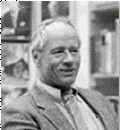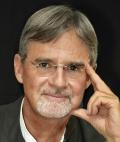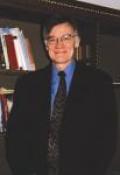Hidden agreements have made all business workplaces remarkably similar.
Though it appears to have sprung up overnight, the inspiration of free-spirited hackers, it in fact was born in Defense Department Cold War projects of the 1950s.
The internet seems so now, so happening, so information age, that its Gen-X devotees might find the uncool circumstances of its birth hard to grasp.
Modern technology enables the housewife to do much more in the house than ever before. That’s good- and not so good.
Things are seldom what they seem. Skim milk masquerades as cream. And laborsavine household appliances often do not save labor. This is the surprising conclusion reached by a small army of historians, sociologists, and home economists who have undertaken, in recent years, to study the one form of work that has turned out to be most resistant to inquiry and analysis—namely, housework.
A leader in the emerging field of technological history speaks about the inventors who made our modern world, and tells why it is vital for us to know not only what they did, but how they thought.
When people say that technology is a juggernaut dragging a helpless society along behind it, Thomas Hughes shakes his head. History shows otherwise, he says.
A lot of people still remember how great it was to ride in the old Pullmans, how curiously regal to have a simple, well-cooked meal in the dining car. Those memories are perfectly accurate, and that lost pleasure holds a lesson for us that extends beyond mere nostalgia.
Not long ago, I received a very angry letter from an old friend. It was a response to my suggestion that liberal arts colleges might give students some instruction in technology; that is, give them some feeling for how the world they are living in works.
American medicine in a crucial era was at once surprisingly similar and shockingly different from what we know today. You could get aspirin at the drugstore, and anesthesia during surgery. But you could also buy opium over the counter, and the surgery would be more likely to be performed in your kitchen than in a hospital.
IN 1884 ALMOST three-quarters of America’s fifty million people lived on farms or in rural hamlets.
America has won more Nobel Prizes in medicine than any other nation: it’s easy when you have the money, the technology, and people from every other nation
In 1977 the sociologist Harriet Zuckerman published a comprehensive study of the American Nobel laureates in science called Scientific Elite .
… is more comfortable and safer than World War II’s “steel pot. ” The problem is that it looks just like the One Hitlers troops wore.
THE NEWS PHOTOGRAPHS that appeared following the lightning invasion of Grenada by United States troops last November were almost as surprising as the invasion itself.
The story of how a blast of cool, dry air changed America
IN THE SUMMER of 1881, as James Garfield lay dying of an assassin’s bullet in the White House, a team of naval engineers was called in to solve a vexing problem: how to cool the President’s bedroom.
On November 18, 1883, the nation finally settled on the method of synchronizing all clocks that we call standard time. Why did it take so long to figure that one out?
THROUGHOUT MOST of the last century, very few Americans could agree on the time of day. Every town kept its own time.
How the novelty item of 1920 became the world-straddling colossus of 1940
In 1921 Secretary of Commerce Herbert Hoover, who was charged with what meager regulation of the airwaves there was, called radio “an instrument of beauty and learning.” Waldemar Kaempffert, who, as editor of
“A wound in the heart is mortal,” Hippocrates said two thousand years ago. Until very recently he was right.
IN MAY OF 1975, when I was fortyseven, I developed angina (heart pain due to an insufficient supply of blood to the heart muscle), and about two months later, after a stress test, a coronary angiogram, and various blood tests, I underwent an opera
THE BIRTH OF THE RAND CORPORATION During World War II, America discovered that scientists were needed to win it—and to win any future war. That’s why RAND came into being, the first think tank and the model for all the rest.
ALONG THE jagged coastline of Southern California, past the hills and forests of Malibu, five miles down from the Santa Monica Mountains, just short of Muscle Beach and the town of Venice, there sits some of the most quaintly de
The decline and fall of the lamppost
I DON’T THINK of myself as having a “thing” about lampposts, but when I walk Manhattan’s streets at night— streets naked to the greenish glare of 1,000-watt lights vaulting three stories high—I realize how much I miss those graceful, human
With Epcot, Walt Disney turned his formidable skills to building a city where man and technology could live together in perfect harmony. The result is part prophecy, part world’s fair. Here, America’s leading authority on technological history examines this urban experiment in the light of past world’s fairs, and tells why it fails where they succeeded—and why that matters.
MOST OF THE world must know by now that Epcot is a place built in north-central Florida by the followers of Walt Disney to explain how science and technology fit into the human scheme of things.
Charles Weller was at his post in the Western Union office in Milwaukee one day in 1867 when his friend Christopher Sholes came in.
It is early 1945. An American bomber crew is anxiously nearing the now familiar islands of the Japanese Empire. Flak begins to burst around the plane as the target comes into view.
Secret recordings made in the Oval Office of the President in the autumn of 1940
INTRODUCTION BY ARTHUR SCHLESINGER, JR.
From the beginning it was clear—in this case the beginning was December 2, 1942, the day the first man-made nuclear reactor was nudged to criticality in a squash court beneath the west stands of the University of Chicago’s Stagg Field and incidentally the first day of wartime g
It’s our most important, profitable, and adaptable crop—the true American staple. But where did it come from?
In 1748 an inquisitive Swede named Peter Kalm, a protégé of the great botanist Linnaeus, came to America to find plants that could be useful in his country. He went around asking questions of everybody about everything.
The Ordeal of Robert Hutchings Goddard
In 1901, just after Christmas, in Worcester, Massachusetts, a sickly nineteen-year-old high school student named Robert Hutchings Goddard sat down to compose an essay on an enterprise of surpassing technological challenge. He was no stranger to enterprise.
“Remember,” Thomas Edison liked to say, “nothing that’s good works by itself, just to please you; you’ve got to make the damn thing work.” One hundred years ago this October, after trying to make the damn thing work for thirtee
Maybe they ought to call this the Uneasy Decade. As we move on toward the twenty-first century (and it really is not so far away, when you stop to think about it), we seem to spend a good part of our time looking back over our shoulders.
The single greatest medical discovery of the last century began as a parlor game, and brought tragedy to nearly everyone who had a hand in it
In the early 1840’s a visiting surgeon approaching the main building of Boston’s Massachusetts General Hospital, an imposing granite structure designed by Charles Bulfinch, could consider that he was about to enter one of the foremost temples of his art.
The Messiah of Time and Motion
Toward the end of the last century an idea took form in the mind of a Philadelphia factory engineer that was destined to change, in profound and troubling ways, the nature of work in the modern world.
The outdoor electric-light spectacular that transformed cities all over the world was born at the Chicago World’s Columbian Exposition of 1893, where a single lighted column glowed with no fewer than four thousand incandescent lamps.
In an age more sanguine about the benefits of progress than our own, Scientific American enthusiastically reported on man’s inventive genius every week. On March 9,1878, its readers learned all about the Hat Conformator (Fig.
How the Philadelphia waterworks became a potent symbol of our lost belief that nature and technology could live together in harmony
Charles Dickens apparently found little to beguile him when he visited Philadelphia in the 1840’s.
During November of 1896 the United States experienced its first publicized UFO flap, and it is perhaps not surprising that it should have occurred in California.
How a Crash Program Developed an Efficient Oral Contraceptive in Less Than a Decade
A good beginning for this story is a meeting in early 1951 of three remarkable people—the greatest feminist of our age, a great philanthropist who was as notably eccentric as she was fantastically wealthy, and a biological scientist whose subsequent world fam





